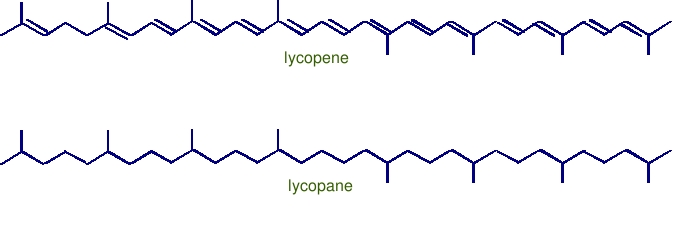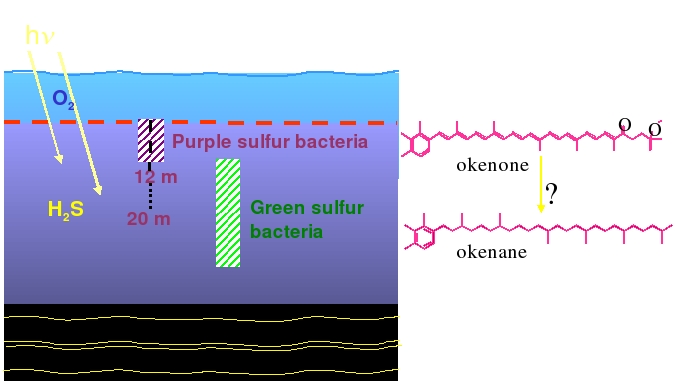
Carotenoids are usually yellow to red colored lipids formally derived from the C40 isoprenoid lycopene (top in above image) carbon skeleton by hydrogenation, dehydrogenation, cyclization and oxidation reactions. More than 600 different carotenoid structures have been identified. They are biosynthesized by all photosynthetic bacteria, eukaryotes and halophilic (high salt concentrations) archaea, but also occur in a large variety of nonphotosynthetic organisms. Though many carotenoids extracted from living organisms and recent sediments have been used to obtain information about biological origins, evolution and ecology, most of these carotenoids are based on a limited number of carbon skeletons. Thus, during diagenesis, most carotenoids lose their diagnostic value by loss of their functional groups, making them into much less specific fossil hydrocarbons, such as lycopane, shown on the bottom in the above image.
Some carotenoids do retain a diagnostic structure and thus are some of the most important biomarkers for paleoenvironmental reconstructions. Because different types of bacteria with different pigments require different redox conditions, we can use pigment biomarkers to reconstruct oxidation-reduction conditions of ancient oceans using these different pigments.
Aromatic carotenoids
The carotenoids we believe are tremendously important biomarkers are aromatic carotenoids. The only significant biological source for aromatic carotenoids in aquatic sedimentary environments are phototrophic green (Chlorobiacae) and purple (Chromatiaceae) sulfur bacteria. The growth of most phototrophic bacteria requires the presence of light and reduced sulfur species in the absence of oxygen. Thus, aromatic carotenoids are often used as biomarkers for photic-zone euxinia.
Okenone and okenane
Okenone, the potential precursor of the yet undiscovered okenane, is exclusively known from the planktonic species of Chromatiaceae (purple sulfur bacteria). Purple sulfur bacteria require reduced sulfur, light and anoxic conditions. Thus, the discovery of okenane could be a tremendously important biomarker for redox conditions. The biomass of purple sulfur bacteria are commonly depleted in 13C compared to regular oxygenic phototrophs.

Chlorobactene (and -ane) and isorenieratene (and -ane)
Chlorobactane, the fossil equivalent of chlorobactene and hydroxychlorobactene, is a biomarker for planktonic as well as benthic (deep water) mat-forming green pigmented species of Chlorobiaceae (green sulfur bacteria). Brown pigmented species of Chlorobiaceae, in contrast, contain predominantly the carotenoids isorenieratene and &beta – isorenieratene, the precursor for sedimentary isorenieratane and (β-) isorenieratane.

As you may see in the above cartoon, green-pigmented bacteria exist only in the top 20 meters of the water column, whereas brown-pigmented exist down to 100 metres.
The biomarkers for green sulfur bacteria are commonly enriched in 13C compared to regular oxygenic phototrophs.


